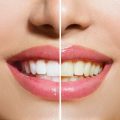Gone are the days when Hollywood glamorized cigarette smoking – think Bette Davis and Paul Heinreid agreeing to “let’s smoke on it” in Now Voyager, 1942 – and the Marlboro Man rode the American West from 1954 to 1999 in those famous (some would say infamous) TV commercials. According to the Centers for Disease Control and Prevention, cigarette smoking among U.S. adults, defined as those 18 years of age and older, declined from 20.9% in 2005 to 15.5% in 2016. Yet, roughly 38 million American adults still smoke.
And we smoke a lot. Some 28.4% of smokers smoke a pack or more per day, while 25% of us smoke only 10 or fewer cigarettes per day. In terms of demographics, the incidence of smoking is higher among the following groups:
- Males aged 25-64
- Lesbians, gays, and bisexuals
- Midwesterners and Southerners
- Native Americans
- People with disabilities
- People under serious psychological distress
- People who are uninsured or insured through Medicaid
- People living below the poverty level
- People with less education
The Advent of Vaping
Electronic cigarettes appeared as early as 1930, but it wasn’t until the 1960s that the first modern e-cigarettes appeared, followed by evaporation delivery systems (hence the word vaping). Chicago was home to the first American VapeBash in March of 2012, which was part of the first World Vaping Day events held around the world.
If you’re one of the 38 million Americans who still smoke, you need to know that e-cigarettes and vape systems represent a totally different approach to the delivery of nicotine. They are not intended to be used to stop smoking, although thousands have found them useful for this purpose. Instead, vaping is intended to give you an alternate source of nicotine and let you mimic the familiar behaviors you associate with smoking, all while completely eliminating your exposure to smoke and significantly reducing many of the health risks associated with smoking.
Vaping Safety
No matter what you’ve heard, e-cigarettes and vaping systems have undergone thorough testing, both here and abroad. Virtually all medical researches have conceded, or at least grudgingly admitted, that the typical vapor e-cigarettes and vaping systems emit contains few, if any, harmful things. In fact, the typical vape juice contains only the following ingredients:
- Water
- Vegetable glycerin (VG)
- Propylene glycol (PG)
- Your choice of nicotine level (25 mg, 50 mg, or none at all)
- Food grade flavoring
In other words, there’s nothing in vape juice that contains anywhere near as many chemicals and carcinogens as found in traditional cigarettes. Even tests conducted by the Food and Drug Administration failed to find harmful levels of any toxic chemicals or carcinogens in vape juice.
Numerous Flavors Available
If you’ve never particularly cared for the taste of traditional cigarettes and/or if you’ve had friends or lovers complain about the cigarette smell on your clothes and the cigarette taste of your mouth, you need to know that vape juice comes in an endless variety of flavors, including these:
- Blue Raspberry Lemonade
- Strawberry Kiwi
- Green Apple
- Iced Honey Dew
- Iced Juicy Watermelon
- Fresh Pineapple
- Sweet Caramel Tobacco
- Iced Green Apple
- Georgia Peach
- Iced Winter Green
- Fruit Punch
- Iced Red Mango
- Strawberry Acai
- Oatmeal Cream Pie Cookie
- Carrot Cake
The Want to Quit Myth
As a smoker, you recognize that all this “I want to quit” propaganda is just that. Few, if any, smokers have any desire to quit. Rather, based on all the negativity surrounding cigarette smoking today, they think they probably should quit for a variety of reasons, not all of them related to health.
Consequently, if you love to smoke but feel you should quit, or at least significantly reduce your intake, vaping may well be the smokeless alternative you have been looking for. It’s more healthy, more socially acceptable, and generally less expensive than smoking cigarettes – not a small consideration in these days of having to pay $60+ for a carton of cigarettes.
































No Comments
Leave a comment Cancel